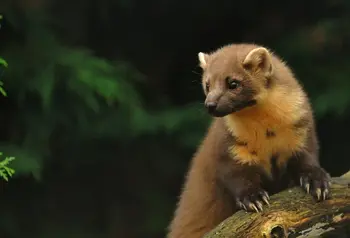Native wildlife back from the brink

Thanks to National Lottery players, the Back from the Brink project will also help a further 200 species currently in rapid decline.
To celebrate this fantastic news we’ve picked just five of our favourites.
Our top five back from the brink
1. Rare grey long-eared bat
Bats - not everyone’s cup of tea but we think the grey long-eared bat deserves a place in our top five. One of the UK's rarest species of bats, sadly its population is rapidly declining. Primarily found in the extreme south of the British Isles, a roost was recently discovered in Pembrokeshire, Wales.
2. The Chequered Skipper butterfly
Butterflies used to be a common sight during British summertime but numbers are in dramatic decline due to habitat loss. The Chequered Skipper is now restricted to damp grassy habitats in western Scotland but Bank to the Brink will see it reintroduced to England.
3. Ladybird spider
When it comes to reputation, spiders get a rough deal. While they can be a bit frightening, we think the Ladybird spider is beautiful. With the red and black ladybird-style markings on its back, it was thought to be extinct in the UK for over 70 years until it was rediscovered in 1980.
4. Pine marten
An elusive creature, the pine marten is mostly found in woodlands in the North of Britain. Interestingly, bilberries make up 30% of this furry little fella's diet resulting in blue droppings during the summer.
5. Hedgehog
A recent BBC Gardeners’ World Magazine survey found 51% of people questioned didn’t see a hedgehog in 2016. Sadly, this spiky garden regular is in serious decline - its population was estimated at 30 million in the 1950s but today there are fewer than one million.
The project
Back from the Brink is the first England-wide coordinated effort to save threatened species. Natural England will work in partnership with Amphibian and Reptile Trust, Bat Conservation Trust, Buglife, Bumblebee Conservation Trust, Butterfly Conservation, Plantlife and RSPB to pool expertise, develop new ways of working and inspire people to save threatened species.
To find out more about the project visit the Nature Back from the Brink website.
